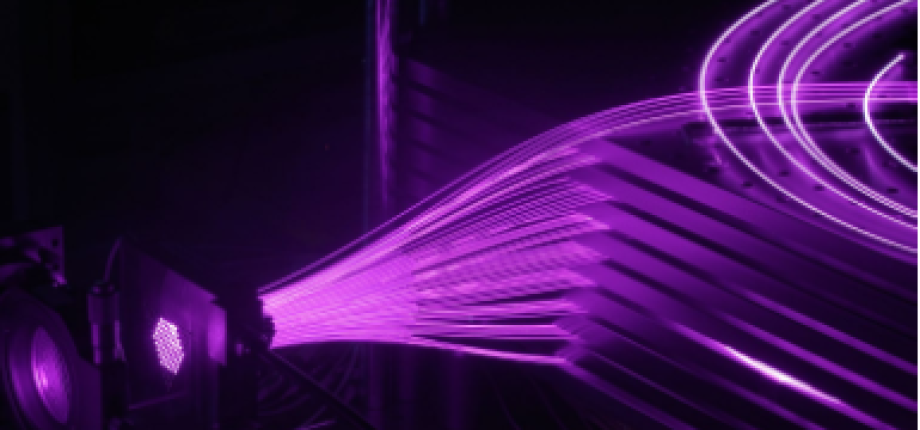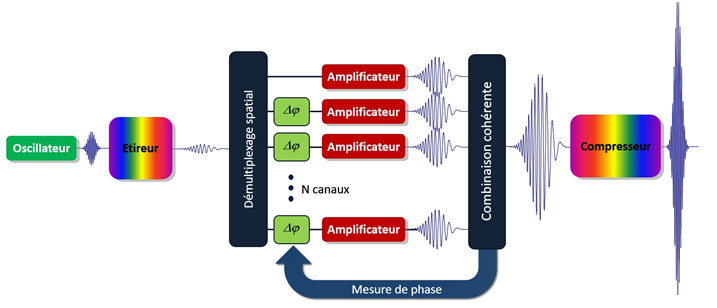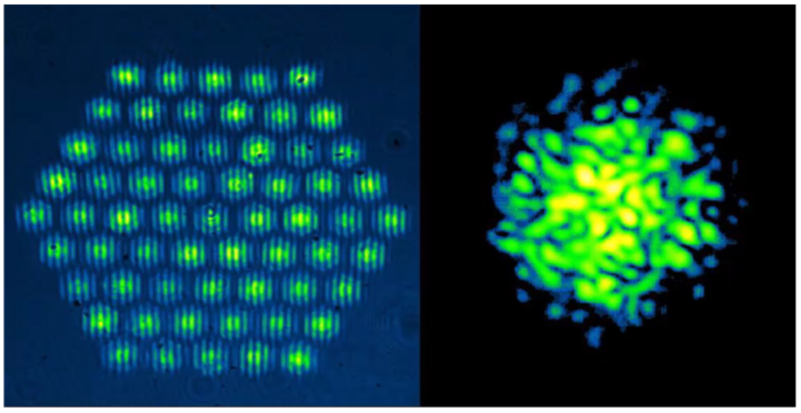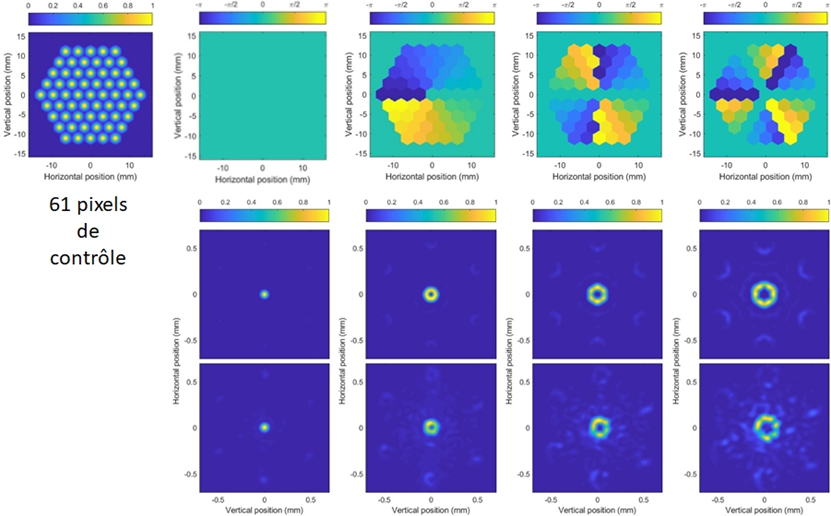XCAN

Coherent Laser Combination
Coherent Beam Combination (CBC) can be seen as the spatial counterpart of Chirp Pulse Amplification (CPA). Indeed, when CPA distributes energy temporally to lower the peak power before amplification, CBC distributes energy spatially for the same purpose. The concept is illustrated on the synoptic opposite where a CBC stage is inserted in a CPA stage. The femtosecond pulses are temporally stretched (up to 5 ns on the XCAN prototype of LULI) then spatially separated (in 61 channels on XCAN) before being amplified in optical fibers. Finally, the pulses are spatially recombined and temporally recompressed in a coherent way.

The XCAN prototype
The XCAN prototype uses Ytterbium doped optical fibers to amplify ultrashort (~300 fs) infrared (1030 nm) laser pulse trains (200KHz to 55 MHz). The ends of these fibers are precisely positioned (with a micrometer accuracy) in a laser head in a hexagonal arrangement as shown in the image below.

The phasing
The movie here illustrates the phasing of the 61 amplified beams. The image on the left is the near field interfering with a reference wave to measure the phase delays to be corrected. The image on the right shows the simultaneous evolution of the far field where the spekle pattern (signature of the incoherence) disappears to lead to a coherent energy distribution in the focal plane of the focusing optics (here a lens) used.

The digital laser
Tailoring the distribution of light to specific experimental or industrial needs is a quest as old as optical engineering. However, it was not until the invention of the laser in 1960 that it was possible to start using coherent light for this purpose. The development of multiple laser beam coherent combination (CBC) techniques opens the way to a paradigm shift in laser architecture where light manipulation is done upstream and no longer only downstream of the light source as such. Thus, the optics engineer is offered the possibility to shape the most relevant source for his application: the XCAN digital laser prototype of the LULI allows to adjust amplitude and phase (and eventually polarization) at the scale of an elementary "pixel" (beam) in order to shape an arbitrary source electric field distribution. As an example, a helical phase allows to obtain an annular energy distribution in the far field (theoretical and experimental distributions are displayed).

Contacts :
jean-christophe.chanteloup[at]polytechnique.edu
ihsan.fsaifes[at]polytechnique.edu
claude-alban.ranely-verge-depre[at]polytechnique.edu




